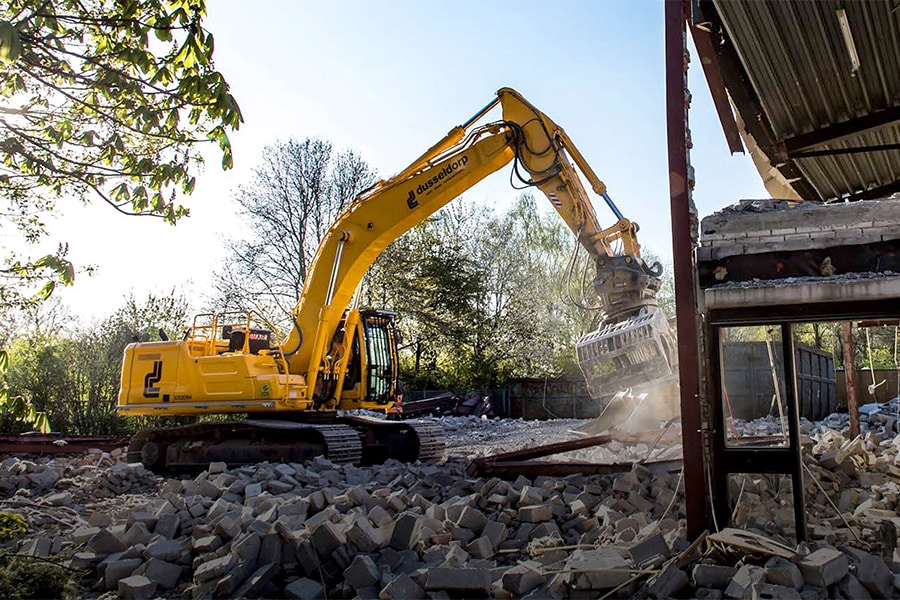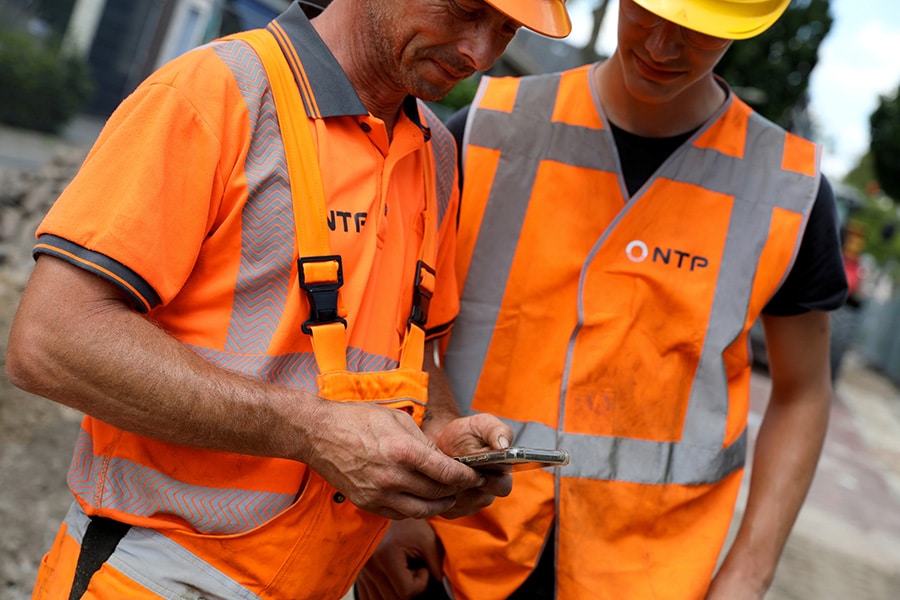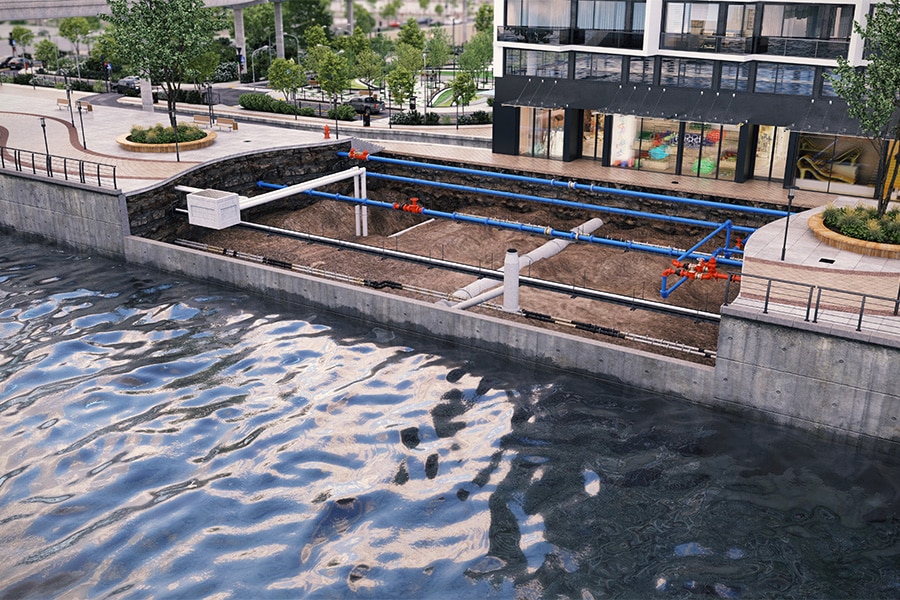
Effective use of software in circular material use
The demolition department of Dusseldorp ISM (Infra, Demolition and Environment) in Lichtenvoorde focuses entirely on the circular dismantling of buildings and objects. Here the released materials are carefully harvested, rather than traditionally demolished. For the different steps in this process of circular material use, the company deploys various tools within ArcGIS Online.
Dusseldorp ISM is engaged in Construction Information Management. The company looks at how digital information in the broadest sense of the word can be deployed as smartly as possible. Maurits Koenders, BIM Specialist at Dusseldorp, explains how Dusseldorp does that. "Thanks to ArcGIS Online, it is possible to overlay a large amount of research data. The software also makes it easy to share all that information with the client and other stakeholders as well." Dusseldorp's focus on reusing materials is prompted in part by the scarcity of raw materials. Fossil fuels are also running out and production processes are creating more and more waste. Dusseldorp wants to make the transition from a disposable economy to a circular economy for good reason. The company is taking the lead in this.
Demolition with 10R model
In circular demolition, Dusseldorp uses the 10R model, also known as the R-ladder. "This is used to find out the maximum reuse potential of a particular material or raw material," Maurits explains. "The first two rungs of the ladder are reconsideration and refraining from demolition - the most sustainable thing is still to just keep using a building - and the last is incineration with energy recovery. Everything in between are possible steps in reuse."
If a decision is made to demolish an object, it is necessary to identify what materials will be released. The on-site inventory often has to be done in a limited amount of time. This is done on a mobile device, so that when walking through a building, the presence of certain materials can be visualized immediately. During the inventory, the materials are photographed, provided with a description, location in the building and certain characteristics, such as number and composition.
Inventory via ArcGIS Survey123
Dusseldorp conducts the inventory with ArcGIS Survey123 after which the data is sent to its own data enrichment dashboard. Maurits: "This is where the optimal R-value is then also immediately determined. With the enrichment dashboard we can also immediately make certain materials available for external marketing via Insert, a marketplace for building materials released after demolition. This happens when a material is unsuitable for reuse in one's own project. Others may be able to use this material. That's how we combat waste."
The data enrichment dashboard was built with ArcGIS Experience Builder. This allows projects to be easily linked to a map with their location and various project features to be displayed individually. As well as photos of materials taken during the inventory. In the app, it is possible to click on a material and then enrich this data. This is all with the aim of being able to determine the optimal R-value, and we also want to fill the properties as completely as possible in order to also make marketing as smooth as possible and, for example, to be able to provide insight into the CO2 reduction through reuse.
Maurits: "A good example of this is when an object is found to be contaminated with asbestos or chromium-VI after an inventory has been made. Then you can check whether cleaning is possible while maintaining the quality. If an R-8 value comes out after cleaning, you can see what happens when you apply a second, more intensive cleaning. If the result is R-3, the material can be reused immediately. This way we can easily determine for each material which variables positively influence the R-value."
More opportunities in the future
In the future, Dusseldorp hopes to make more use of the possibility of interactive 3D models and 360-degree cameras and the integration between the files generated with them. The 3D models are generated from a shot of the building with a LiDAR scanner or 360-degree camera. "The developments of integrating 3D web scenes into Experience Builder are promising," Maurits says. "A link with our dashboard would, for example, make it possible to verify measurements of a building afterwards. It would also then be possible to take your client into the building remotely. We also want to expand the data enrichment dashboard so that we can deliver data to the materials passport according to Madaster requirements. For us, technology is the key to CO2-neutral working, demolition and transportation."
Saving
The process helps accelerate the transition from a linear disposable economy to a circular economy by providing shareable insights into released material streams. This promotes both internal and external reuse and marketing. In addition, it enables Dusseldorp to determine the optimal reuse strategy (R-value), giving materials a longer lifespan and more efficient use. In addition, the process optimizes internal business processes by automating human administrative actions, leading to a more efficiently designed work process and higher quality output. By reducing human intervention, errors are minimized, improving the reliability and consistency of results.
Heeft u vragen over dit artikel, project of product?
Neem dan rechtstreeks contact op met Esri Netherlands.
 Contact opnemen
Contact opnemen




